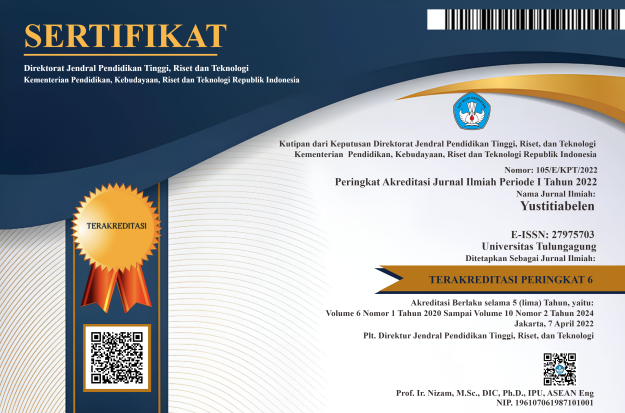WHAT SHOULD A TEACHER KNOW ABOUT MOTIVATION TO LEARN ENGLISH AS A FOREIGN LANGUAGE
DOI:
https://doi.org/10.36563/publiciana.v9i1.166Keywords:
Teacher, Motivation, To Learn, EnglishAbstract
Learning English as a language which is used by the majority people of the world socially, culturally, economically and politically has many advantages .At the same time, the student whose a language which is different in the linguistics rules and cultural or social norms often face some difficulties to be proficient in learning to using the English. This fact happens because the language is not used in the community where the students conduct their daily activities. Being aware of some obstacles of the students, building the student’s motivation is one of the ways that can eliminate the problems faced by the students. The desire or the interest of the students in acquiring the knowledge of English plays important roles to elevate the student’s achievement. There are two important aspects related with the building of motivation to learn English. The first deals with the motivation to gaining the knowledge of English in the context of social-educational.(classroom-learning context). The second relates to pre-actional, actional and post-actional motivation. The later aspect of motivation asserts that the individual perception of the task, atmosphere, the course content, materials, facilities, personal characteristic of students the roles of the teacher influence the individual’s classroom learning motivation.
Downloads
References
Alison, J.1993. Not bothered? Motivating reluctant language learners in Key
Stage 4: London: CILT.
Argyle,M.1969. Social Interaction. London: Tavistock Press.
Benson,P.2000.Teaching and researching autonomy in language learning London: Longman.
Chambers,G.N.1999. Motivating language learners. Clevedon: Multilingual
Matters.
Covington,M. 1999. Caring about learning: The nature and nurturing of subject-matter appreciation. Educational Psychologist, 34:127-36.
Daniels, R. 1994. Motivational mediators of cooperative learning. Psychological Reports,74:1011-22.
Dornyei, Z. and Otto, I. 1998. Motivation in action: A process model of L2
motivation. Working Papers in Applied Linguistics (London: Thames Valley University), 4:43-69.
Dornyei, Z. 2001. Teaching and Researching Motivation. England: Pearson Education Limited.
Ehrman, M. E. and Dornyei, Z. 1998. Interpersonal dynamics in second language
Education: The visible and invisible classroom. Thousand Oaks, CA: Sage.
Good, T. L. and Brophy, J. E. 1994. Looking in classrooms. 6th edition. New York: HarperCollins.
Little, D. 1991. Learner autonomy 1: Definitions, issues and problems. Dublin:Authentik.
MacIntyre, P. D. 1999. Language anxiety: A review of the research for language
Teachers. In Young, D. J. (ed.). Affect in foreign language and second language learning. Boston, MA: McGraw-Hill, pp. 24-45.
Rogers, C. 1991. On becoming a person. Boston, MA: Houghton Mifflin.
Ushioda, E. 1997. The role of motivational thinking in autonomous language
Learning. In Little, D. and Voss, B. (Eds.). Language centres: Planning for the new millennium. Plymouth: University of Plymouth, CERCLES, Centre for Modern Languages, pp. 39-50.
Wenden, A. 1991. Learner strategies for learner autonomy. Hemel Hempstead: Prentice Hall.
Wright, T. 1987. Roles of Teachers & Learners. Oxford: Oxford University Press.
Young, D. J. (ed.). 1999. Affect in foreign language and second language
learning. Boston, MA: McGraw-Hill.
Downloads
Issue
Section
License
1. Hak cipta atas artikel apa pun dipegang oleh penulisnya.
2. Penulis memberikan jurnal, hak publikasi pertama dengan karya yang dilisensikan secara bersamaan di bawah Lisensi Atribusi Creative Commons yang memungkinkan orang lain untuk membagikan karya dengan pengakuan atas kepenulisan dan publikasi awal karya tersebut dalam jurnal ini.
3. Penulis dapat membuat pengaturan kontrak tambahan yang terpisah untuk distribusi non-eksklusif dari versi jurnal yang diterbitkan dari karya tersebut (misalnya, mempostingnya ke repositori institusional atau menerbitkannya dalam sebuah buku), dengan pengakuan dari publikasi awalnya di jurnal ini.
4. Penulis diizinkan dan didorong untuk memposting karya mereka secara online (misalnya, di repositori institusional atau di situs web mereka) sebelum dan selama proses pengiriman, karena hal itu dapat mengarah pada pertukaran yang produktif, serta kutipan yang lebih awal dan lebih besar dari karya yang diterbitkan.
5. Artikel dan materi terkait yang diterbitkan didistribusikan di bawah Lisensi Internasional Creative Commons Attribution-ShareAlike 4.0















